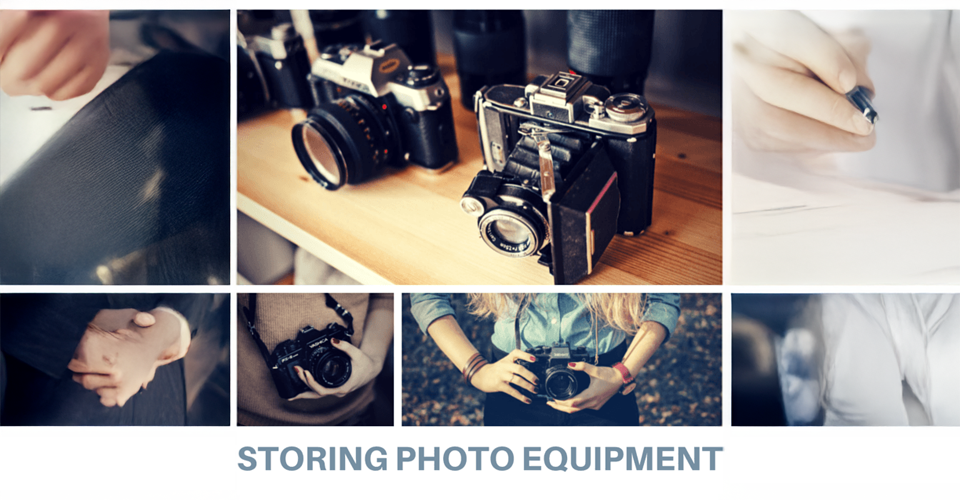 Even if you aren't a professional photographer, a camera is often a pricey investment that should be taken care of properly. Because photography equipment is delicate, knowing how to properly store it in your home will ensure that it works perfectly the next time you need to capture those precious moments.
Even if you aren't a professional photographer, a camera is often a pricey investment that should be taken care of properly. Because photography equipment is delicate, knowing how to properly store it in your home will ensure that it works perfectly the next time you need to capture those precious moments.
Cleaning the camera
Before and during storage of the photo equipment, you should clean the camera. If you have a DSLR it likely came with a cleaning kit.
-
Use a blower to remove dust and lint before wiping the outside gently with a soft, dry cloth
-
When cleaning the lens and mirror remember that these elements are made of glass and are easily damaged
-
Dust or foreign matter inside the camera can cause damage that IS NOT COVERED by the warranty
-
To remove fingerprints, apply a small amount of lens cleaner to a soft cloth and clean gently
DO NOT:
-
Use an aerosol blower or canned air on the lens--the extreme cold can cause damage
-
Apply pressure to the monitor, it could damage or malfunction
If the monitor does break, do your best to avoid injury from the broken glass.
Extended storage
Even if your camera equipment is nothing more than a tripod and a point and shoot, you should still store it correctly when not in use. If you know you won't be using your camera for a while take these steps before storing it in your home.
-
When the camera won't be used for an extended period, you should remove the battery to prevent leakage and accidental short circuiting of the battery terminals. Store the batteries somewhere cool and dry. AA-alkaline batteries can drain over time, so instead of storing them, use them in other equipment.
-
If the batteries are rechargeable, feel free to store them and use them later. However, keep in mind all batteries eventually weaken and fail to hold a charge.
-
To prevent mold or mildew, store the camera or camera body in a well-ventilated and dry area. The camera should be stored in a camera case with a dessicant--a product to absorb any moisture.
-
It's important to note that dessicants lose their capacity to absorb moisture so they should be replaced regularly. You should also remove the camera from its case and storage at least once a month to further prevent mold or mildew.
-
When you take it out, turn the camera on and release the shutter a few times before putting it in storage again.
DO NOT STORE THE CAMERA:
-
In a plastic bag
-
With naphtha or camphor mothballs
-
Near equipment that produces a strong magnetic field
-
Near areas subject to extremes of temperature (near a space heater or air conditioner, etc.)
Memory cards
Some of the most important parts of photography equipment are the memory cards! If you don't have a safe place to keep them, like a memory card wallet or a case, keep these tips in mind while you look for a safe stashing spot.
DO NOT:
-
Touch the terminals with your fingers or metal objects
-
Bend or drop the memory cards
-
Expose them to heat, water or high levels of humidity or sunlight
When storing your photo equipment, it's recommended that you choose someplace safe where nothing will be knocked over. If you have a cabinet or safe, you could store it there.